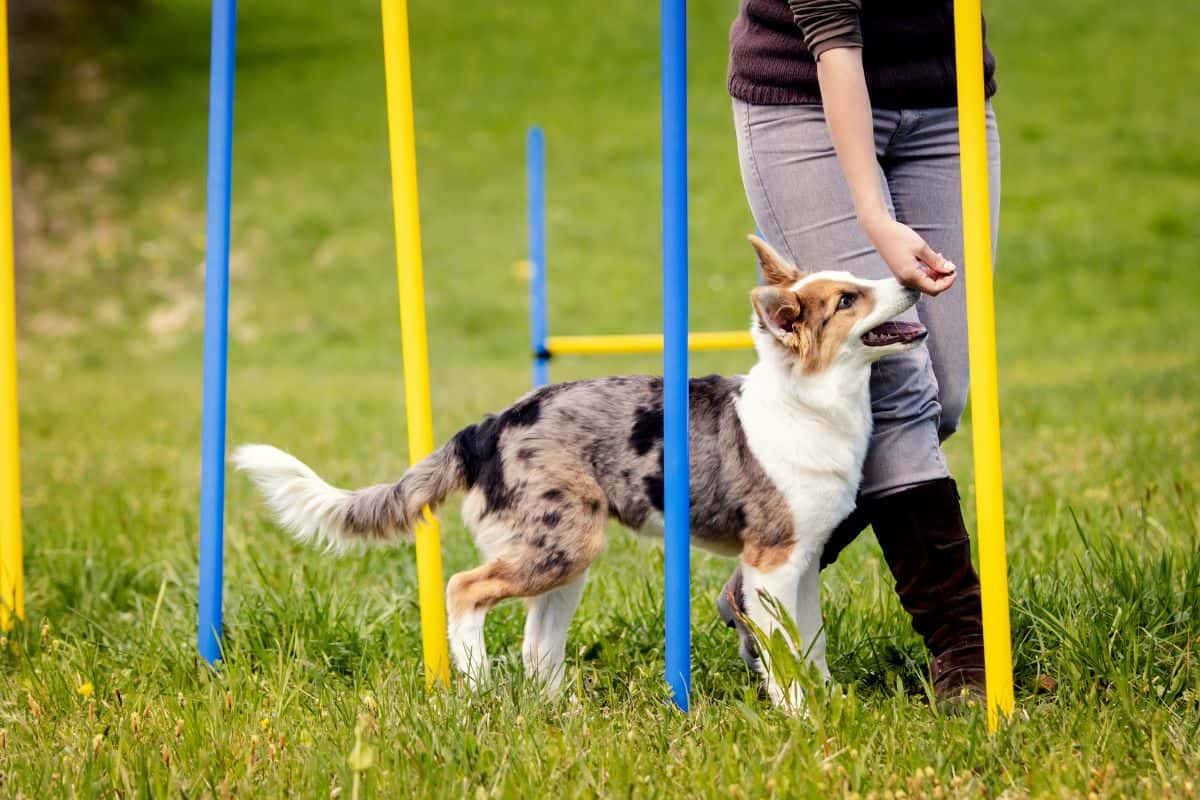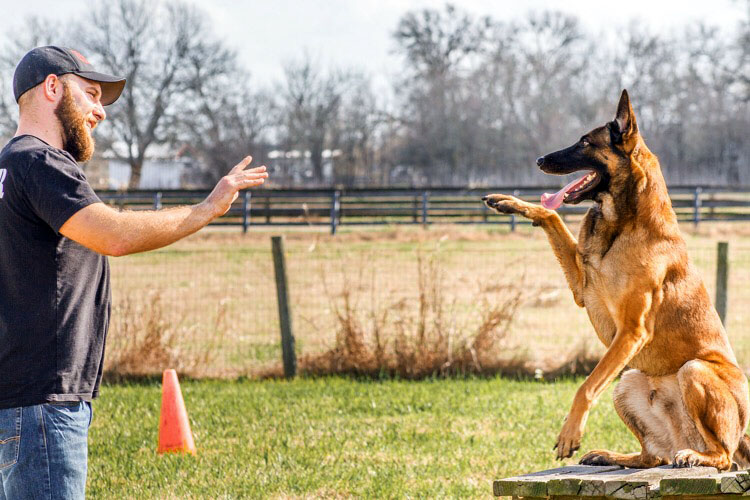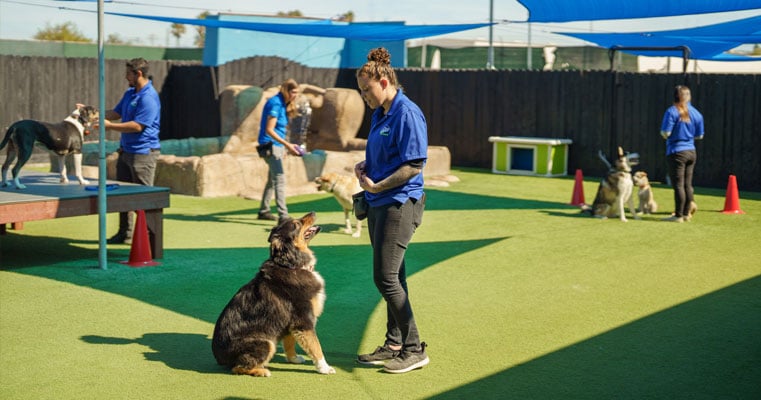Common Behavioral Issues and Their Solutions in Dog Training
Common Behavioral Issues and Their Solutions in Dog Training
Blog Article
Vital Tips for Effective Dog Training: A Guide for Animal Owners
Efficient dog training is a complex process that calls for a critical method customized to both the family pet's temperament and the owner's purposes. Understanding how to navigate these obstacles can substantially boost the training experience, inevitably changing the connection between proprietor and dog.
Understanding Canine Behavior
Recognizing canine actions is crucial for efficient training and cultivating a harmonious partnership between dogs and their owners. Pets connect largely with body movement, articulations, and activities, making it crucial for proprietors to interpret these signals accurately. Recognizing a pet's posture, tail placement, and ear positioning can give insights into its psychological state. As an example, a wagging tail does not always suggest joy; it can also indicate enjoyment or anxiety.

Socializing plays a considerable role in dog habits; direct exposure to numerous environments, people, and other pets can significantly impact a dog's temperament. Moreover, factors such as type attributes and specific personality should lead training techniques, as some breeds might have details behavior traits that necessitate customized strategies. By comprehending these elements, proprietors can create an encouraging atmosphere that encourages favorable behavior, bring about successful training outcomes and a much deeper bond with their animals.
Developing Regular Commands
Effective communication with your pet dog begins with establishing consistent commands. This fundamental aspect of training is vital for promoting understanding in between you and your animal. Uniformity in the commands you use makes certain that your canine can accurately associate certain words or expressions with the desired actions.
When selecting commands, select clear, distinctive words that are simple to differentiate and say from each other. Prevent making use of similar-sounding commands that might perplex your canine. For instance, utilizing "rest" and "stay" is proper, but "rest" and "hit" could bring about misunderstandings.
Additionally, preserve the very same tone and volume for every command. Pets are sensitive to singing signs, so varying your tone can produce complication.
It is just as vital to ensure that all member of the family are on the same page concerning the commands used. A united front in command usage will certainly prevent mixed signals and reinforce the learning process.
Favorable Support Techniques
The power of favorable support in pet training exists in its capability to encourage preferred actions via benefits and praise. This technique is based in the principle that behaviors complied with by favorable results are much more most likely to be duplicated. By incorporating positive support into your training routine, you can successfully shape your pet's behavior in a constructive fashion.
To execute positive support, it's important to identify what motivates your pet, whether it be treats, toys, or spoken appreciation. When your pet executes a wanted activity, such as remaining on command, instantly reward them with a treat or love. This organization in between the command and the positive outcome check my source enhances their understanding.
It's important to timing the rewards properly; supplying the reinforcement within seconds of the wanted habits aids your canine make the connection (dog training). Furthermore, uniformity is key-- make certain that all family members make additional reading use of the same commands and incentive systems to stay clear of confusion

Progressively, you can reduce the frequency of deals with as your pet learns the habits, transitioning to commend or intermittent benefits. This technique not only cultivates a strong bond between you and your dog but likewise advertises a positive knowing environment, making training an enjoyable experience for both.
Socialization and Communication
Regularly subjecting your canine to a range of settings, people, and various other pets is vital for their social growth. Socialization should start early, preferably during the critical home window of 3 to 14 weeks, when puppies are most receptive to new experiences. However, older canines can also gain from recurring socializing initiatives.
Introduce your dog to various setups, such as parks, pet-friendly shops, and city locations. This direct exposure assists them adjust to different stimulations, reducing anxiety and fear reactions. Urge positive interactions with various other pet dogs and people, making sure that these encounters are controlled and safe to promote self-confidence.
Use structured playdates with courteous canines, as this can enhance your pet's social abilities and instruct them suitable helpful hints behavior. Obedience courses and training sessions also give excellent possibilities for socializing, enabling your canine to engage with others in a monitored atmosphere.
Monitor your pet dog's body movement throughout interactions, as this will certainly help you assess their comfort degree. Slowly boost direct exposure to more challenging circumstances while making certain that each experience declares. A well-socialized pet dog is more most likely to exhibit well balanced behavior, making them a pleasure to have in any type of setting.
Addressing Common Training Obstacles
Every dog owner will certainly run into training challenges at some point, no matter of their pet's age or socialization level. Determining usual issues such as stubbornness, interruptions, and terror can aid in developing efficient methods for renovation.

Slowly introduce distractions as the canine becomes much more skilled in commands. Short, constant training sessions are likewise efficient in keeping focus.
Terror can impede a pet dog's understanding process. Steady desensitization to the resource of worry, coupled with positive support, can aid reduce stress and anxiety. Perseverance is vital; never ever compel a pet dog right into a scenario that triggers distress, as this may intensify the concern.
Ultimately, understanding and addressing these usual difficulties with an organized method will cultivate a more efficient training experience, enhancing the bond between pet dog and owner while advertising effective learning.
Final Thought
In summary, effective pet dog training relies upon a detailed understanding of canine behavior, the facility of regular commands, and the application of favorable support methods. Socialization plays a critical duty in developing well-adjusted animals, while attending to typical training difficulties calls for patience and versatility. By implementing these crucial methods, pet proprietors can cultivate a strong bond with their canines and promote desirable actions, ultimately bring about an unified relationship in between people and their canine buddies.
Understanding pet dog habits is necessary for effective training and cultivating an unified connection between dogs and their proprietors.Socialization plays a substantial function in dog actions; direct exposure to numerous settings, individuals, and various other pets can dramatically affect a pet dog's personality.The power of positive reinforcement in pet training exists in its capacity to urge preferred behaviors through incentives and praise. By including positive support right into your training routine, you can effectively form your canine's actions in a constructive fashion.
In summary, successful dog training relies on an extensive understanding of canine habits, the facility of constant commands, and the application of favorable support methods.
Report this page